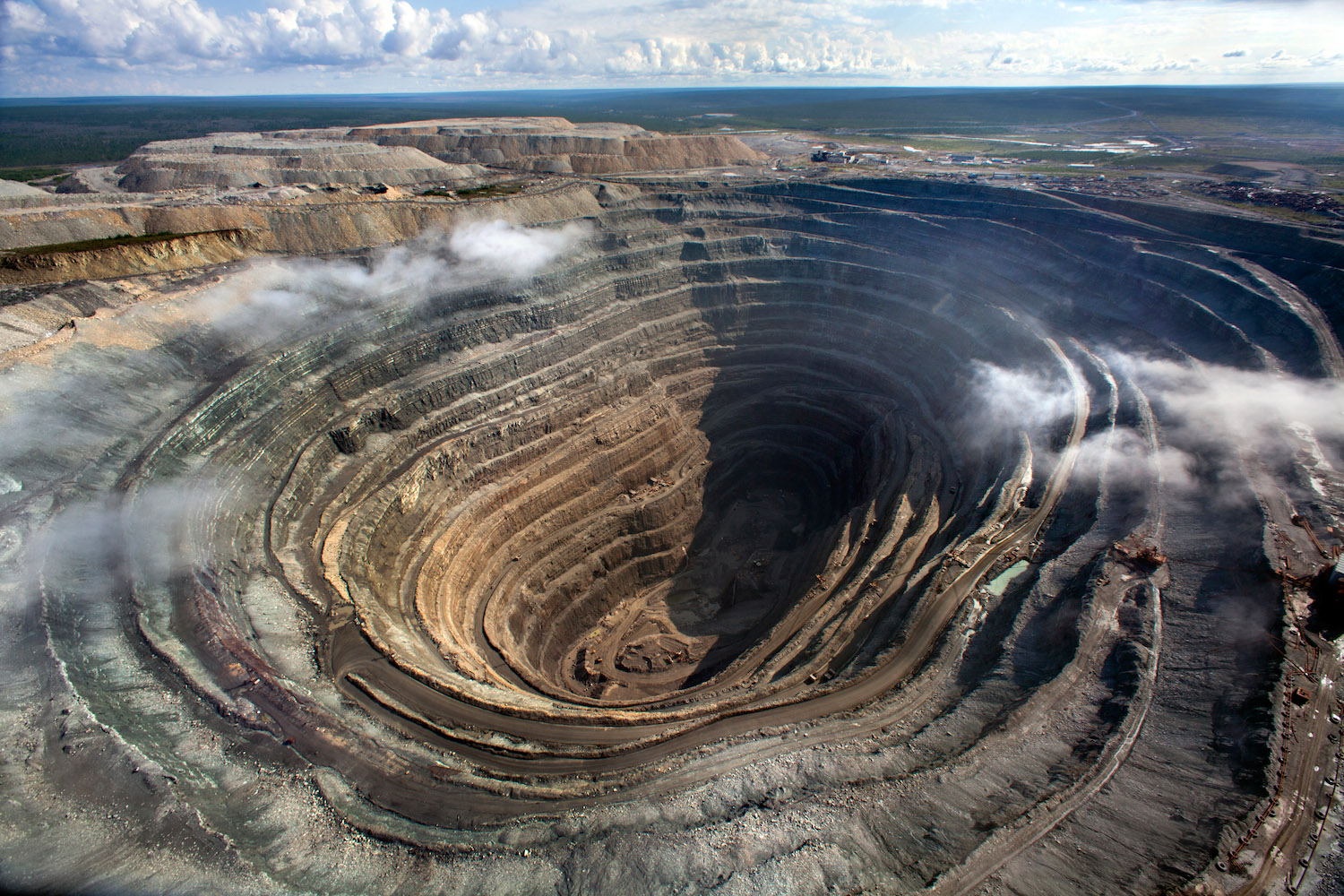Diamond Mining Industry

Diamonds pit – The history of diamond mining spans centuries, with the earliest known diamonds being discovered in India around the 4th century BC. Over the centuries, diamond mining has evolved significantly, from rudimentary hand-digging methods to advanced mechanized techniques.
In the unforgiving depths of the diamond pit, where the sun’s rays surrender to darkness, a faint glimmer beckons. It is not the radiance of precious stones but the glint of a forgotten era, a sword pit , where ancient warriors met their fate.
Like a hidden echo, the sword pit whispers of a time when blood stained the earth instead of the sparkling jewels that now adorn its surface.
Today, the major diamond-producing countries include Botswana, Russia, Canada, and South Africa. Each country employs unique mining methods based on the geological conditions of their diamond deposits.
The diamonds pit, a chasm of glistening allure, where fortunes are made and lost, echoes with the haunting melodies of Rihanna’s songs. Like the raw beauty of diamonds, her voice cuts through the grime, illuminating the depths of the human heart.
Yet, as the diamonds are extracted from their earthy embrace, so too does Rihanna’s music carry us away from the pit’s dark abyss, reminding us of the shimmering possibilities that lie beyond its confines.
Economic Impact
- Diamonds are a valuable commodity, and their mining contributes significantly to the economies of diamond-producing countries.
- The industry creates jobs, generates tax revenue, and supports local businesses.
Environmental Impact
- Diamond mining can have a negative impact on the environment, including habitat destruction, water pollution, and air pollution.
- However, responsible mining practices can mitigate these impacts and promote sustainable development.
Diamond Characteristics and Properties

Diamonds, the epitome of brilliance and durability, possess a captivating array of physical and chemical properties that set them apart from other gemstones. Their allure stems not only from their captivating sparkle but also from their exceptional hardness, making them the ideal material for a wide range of applications.
Diamonds are composed primarily of carbon, arranged in a tightly packed crystalline structure known as diamond cubic. This unique arrangement of atoms grants diamonds their unparalleled hardness, earning them the distinction of being the hardest known natural material. The Mohs scale of mineral hardness, which measures a mineral’s resistance to scratching, assigns diamonds a value of 10, the highest possible rating.
In addition to their exceptional hardness, diamonds exhibit remarkable thermal conductivity. They possess the ability to conduct heat with exceptional efficiency, making them valuable in applications where heat dissipation is crucial. Diamonds also display a high refractive index, meaning they have the ability to bend light to a greater extent than most other materials. This property contributes to their dazzling brilliance and makes them highly sought after for use in jewelry.
Clarity
Clarity refers to the presence of inclusions, or tiny imperfections, within a diamond. The fewer inclusions present, the higher the diamond’s clarity grade. The Gemological Institute of America (GIA) has established a clarity grading system that ranges from Flawless (FL) to Included (I3). Flawless diamonds are exceptionally rare and highly prized, while diamonds with more noticeable inclusions may be less valuable.
Color
Diamonds are typically associated with a colorless or white appearance. However, they can also occur in a variety of colors, including yellow, brown, pink, and even blue. The most desirable diamonds are those that are colorless or near-colorless, as these exhibit the highest brilliance and fire. Diamonds with more intense colors may be less valuable, but they can still be highly prized for their unique appearance.
Carat Weight, Diamonds pit
Carat weight refers to the weight of a diamond in carats. One carat is equal to 200 milligrams. Larger diamonds are generally more valuable than smaller diamonds, but the value of a diamond is also influenced by its clarity, color, and cut.
Uses of Diamonds
Diamonds have a wide range of applications beyond their use in jewelry. Their exceptional hardness and thermal conductivity make them valuable in various industrial and technological settings.
In manufacturing, diamonds are used in cutting tools, drill bits, and other abrasive applications. Their ability to withstand extreme heat and pressure makes them ideal for use in high-performance machinery. Diamonds are also employed in the production of semiconductors, where their precise cutting abilities are essential for creating intricate electronic components.
In technology, diamonds are used in lasers, optics, and sensors. Their ability to transmit light with minimal distortion makes them valuable for use in optical applications. Diamonds are also used in medical devices, such as surgical scalpels and dental drills, where their precision and durability are essential for delicate procedures.
Diamond Market and Trade: Diamonds Pit

The global diamond market is a complex and highly regulated industry. It is dominated by a few large mining companies and a network of dealers and brokers who control the supply and distribution of rough and polished diamonds.
The diamond market is divided into two main segments: the rough diamond market and the polished diamond market. Rough diamonds are mined from the earth and sold to cutting and polishing factories, where they are transformed into polished diamonds. Polished diamonds are then sold to jewelry manufacturers, retailers, and consumers.
Diamond Cartels
The diamond industry has been historically dominated by cartels, which are groups of companies that work together to control the supply and price of diamonds. The most famous diamond cartel was De Beers, which was founded in 1888 and controlled the majority of the world’s diamond production for over a century.
De Beers used its monopoly power to keep diamond prices high and to prevent new companies from entering the market. However, in the late 20th century, De Beers’ dominance began to decline as new diamond mines were discovered and new cutting and polishing technologies were developed.
The Kimberley Process
The Kimberley Process is an international certification scheme that was created in 2003 to prevent conflict diamonds from entering the legitimate diamond market. Conflict diamonds are diamonds that are mined in war zones and used to finance armed conflict.
The Kimberley Process requires all rough diamonds to be certified as conflict-free before they can be sold. This has helped to reduce the flow of conflict diamonds into the legitimate market, but it has also been criticized for being too lenient and for failing to address the issue of human rights abuses in the diamond industry.
Factors that Influence Diamond Prices
The price of diamonds is determined by a number of factors, including the quality of the diamond, the size of the diamond, the shape of the diamond, and the color of the diamond. The most important factor is the quality of the diamond, which is determined by its clarity, color, and cut.
Other factors that can influence diamond prices include the supply and demand for diamonds, the economic climate, and the political situation in diamond-producing countries.
The diamonds pit was a place of darkness and despair. The miners toiled away in the relentless heat, their bodies slick with sweat and their faces etched with exhaustion. The only respite came from the glimmer of the diamonds they unearthed, each one a precious stone that could fetch a fortune.
Yet, even these gems could not dispel the sense of dread that hung over the pit like a sword definition , threatening to sever the miners’ hopes at any moment.
In the treacherous depths of the diamond pit, where greed and desperation intertwined, the miners’ only solace was the glint of their picks, each swing a testament to their relentless pursuit of wealth. But beneath the surface of the earth, another story unfolded—a tale of ancient swords and their hidden meanings.
Like the sharp edge of a sword , the diamonds held secrets of power and sacrifice, a reminder that even in the darkest depths, the human spirit could triumph over adversity.
The diamonds pit, a treacherous labyrinth of glittering gems and shattered dreams, whispers secrets of a hidden realm. Its crystalline depths mirror the enigmatic quantum pits , where the laws of physics dance in a surreal ballet. Yet, as the diamonds gleam, they serve as a reminder of the perilous depths that lie beneath, where the pursuit of fortune can lead to a treacherous fall.